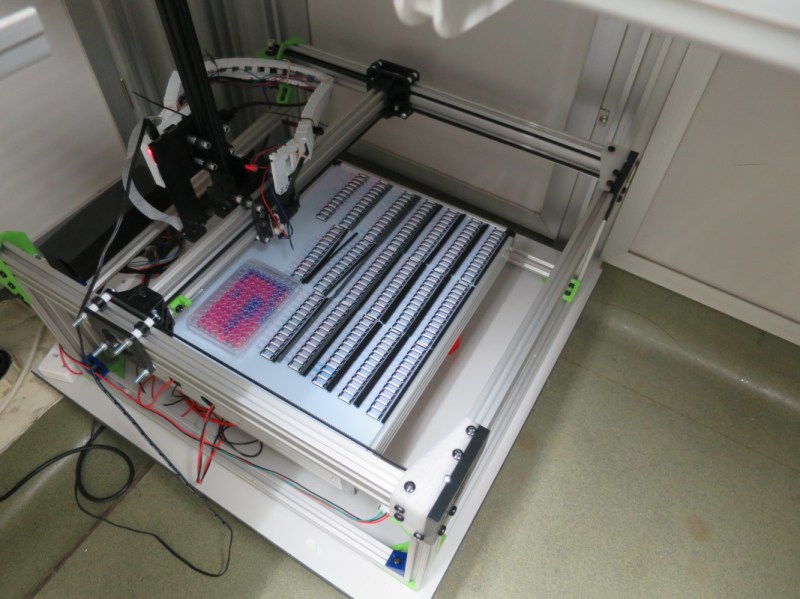Working in a university or research laboratory on interesting, complicated problems in the sciences has a romanticized, glorified position in our culture. While the end results are certainly worth celebrating, often the process of new scientific discovery is underwhelming, if not outright tedious. That’s especially true in biology and chemistry, where scaling up sample sizes isn’t easy without a lot of human labor. A research group from Reading University was able to modify a 3D printer to take some of that labor out of the equation, though.
This 3D printer was used essentially as a base, with the printing head removed and replaced with a Raspberry Pi camera. The printer X/Y axes move the camera around to all of the different sample stored in the print bed, which allows the computer attached to the printer to do most of the work that a normal human would have had to do. This allows them to scale up massively and cheaply, presumably with less tedious inputs from a large number of graduate students.
While the group hopes that this method will have wide applicability for any research group handling large samples, their specific area of interest involves researching “superbugs” or microbes which have developed antibiotic resistance. Their recently-published paper states that any field which involves bacterial motility, colony growth, microtitre plates or microfluidic devices could benefit from this 3D printer modification.















https://en.wikipedia.org/wiki/Liquid_handling_robot
I think the story here is that they did it for cheap with now commodity parts, rather than forking out $50,000 for a one trick pony.
Your keyboard may be broken, adds double zero each time you press 0 ;)
https://www.ebay.com/itm/PCB-Multi-Interface-for-Roche-Cobas-Mira-8071365/122617534763
https://www.ebay.com/itm/173219836442
from the original description the taking pictures of test-plates seems to be the important upgrade here not the liquid handling part.
I’ve just figured out how to make my 3D printer into a 4D printer. I gave it a little time…
then you converted it into a cooking robot by giving it a little thyme.